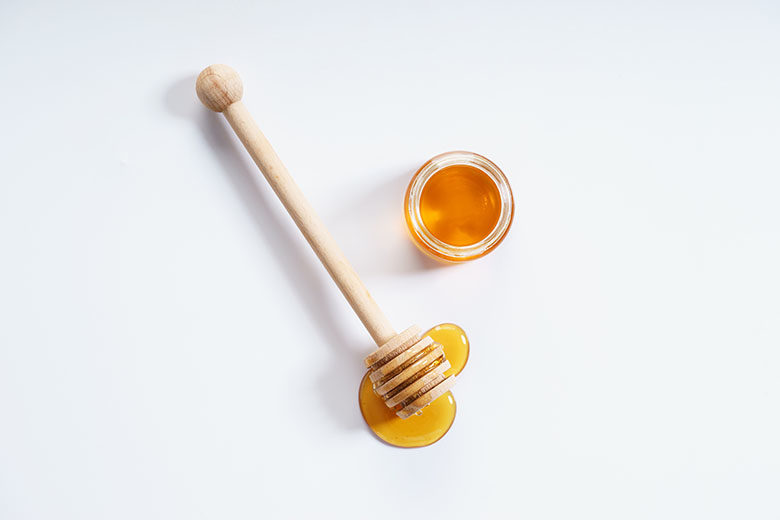
When tea and biscuits taste decidedly bland, there is one ingredient diners love to reach for: honey. A combination of the monosaccharides fructose, glucose, maltose and sucrose give this ancient food an irresistible sweetness that many prefer over other simple sugars. Recently, honey has gained popularity as concern heightens around the amount of sugar derivatives added to packaged foods. The search for a less processed sweet flavor alternative has led food purists to the delicious nectar. The art of beekeeping continues to evolve, and as a result honey harvesters are learning more about its potential complexity.
Although beekeepers, known as apiarists, skillfully avert painful stings to collect honey, the majority of the credit rightfully belongs to the insect for its work in producing the sweet substance. Honeybees, bumbles, stingless bees and even honey wasps all take on this task. The true origin of honey is the flower, therefore it is the largest determinant of the final product’s aroma and flavor. Enthusiasts categorize the honey into two floral groups; mono-floral and poly-floral. Mono-floral refers to a honey that comes from a single variety of flower, whereas in poly-florals numerous flower types come together to create a distinctive flavor. However, the term mono-floral should be given loosely since restricting thousands of bees to only one flower is near to impossible. To produce one pound of edible honey, bees can gather the nectar from more than two million flowers.
Like a fine wine, the location, season and surrounding vegetation of an area all influence the blossoms and, therefore, honey’s flavor profile. Apiarists take great pride in their region’s harvested product. Honey can be found all over the world, resulting in a cornucopia of nectars to savor.
In France, vibrant purple lavender flower adorn the fields of Provence, therefore lavender honey is a favorite among the locals. Known for its light lavender fragrance and medium amber color, it can be used to glaze chicken, flavor macaroons or enliven ice cream. In Greece, the herb thyme defines the distinct flavor of Hymettus honey. Named for the country’s Mount Hymettus, where thyme is plentiful, this variety is the signature ingredient of the region’s famous baklava dessert. It’s a golden color, speckled with dark flecks, and its runny consistency makes it desirable for drizzling over bread or yogurt.
The United States alone is home to more than 300 varieties of honey. Fireweed honey is found in the Pacific Northwest, whereas the popular orange blossom honey is collected in Southern California, Florida and some areas of Texas. The list goes on, including avocado, blueberry, pine, pumpkin, tupelo and wildflower honey.
Nutritionally, honey’s calories are derived from the monosaccharides. Per tablespoon, honey contains 65 kcals, 17g carbohydrate, 0g fat and trace protein amounts. However, honey’s power lies in its cell-rejuvenating antioxidant value. Just as fruits, vegetables and flowers contain antioxidants, these compounds are in turn transferred with the nectar gathered by bees. Each honey variety will contain its own blend, giving it the potential to help prevent cancer, improve immunity and reduce inflammation when eaten moderately with a balanced diet.
Rarely will you find a food with stronger historical, nutritional and regional roots than honey. Although admired for its sweet simplicity, honey has shown it has far greater depth. Exploring the varieties of your local honey supplier can be a fascinating experience.
Do not forget to take home a sample, and when you do, give this nutritious energy-packed snack a try:
Honey-Nut Snack Mix
Recipe developed by Bethany Grzesiak, MS, RD
Ingredients
½ cup – honey (pick your new favorite variety)
2 Tablespoons – butter
1 teaspoon – ground cinnamon
1 cup raw almonds
1 cup raw walnuts
1 cup raw pecans
1 cup shelled pistachios (salted preferable for flavor enhancement)
Directions
- Combine the honey, butter and cinnamon in a saucepan. Bring the mixture to a boil, reduce to medium heat and stir constantly for two minutes.
- In a separate bowl, combine the nuts, then pour honey mixture over nuts and mix until coated.
- Spread on foil-lined cookie sheet (I suggest spraying with cooking spray first).
- Bake at 325°F for 10 to 15 minutes, tossing the mixture once during this time. Cool 20 to 30 minutes.


